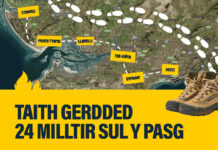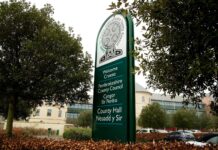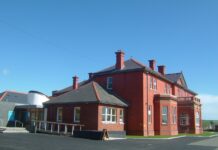I’ve taken a break from my story to help those of you who are looking at doing or already researching their family tree. These next few articles will deal with Census records.
The Importance of Census Records When Researching Your Family History
Most of us know that familiar feeling of dread every 10 years when the Census forms are delivered. However, Census Records are the single most important resource for tracing your family tree back to the mid 1800’s. By using the information the censuses provide, you can build a better, more complete picture, of your ancestors’ lives.
What is a Census Record?
The census is essential in the administration of a country. The details collected are used to track factors such as population growth and movement. By using the information collected, governments can plan and correctly allocate resources where they are needed.
The census was originally conducted for various reasons; for example, as a way to find out how many men were available in the country to fight in the Napoleonic Wars; to find out the overall size of the population, in order to see how many people in the country needed to be fed and to find out the size of the workforce of an industrialised country.
Information has to be given about every person, man, woman or child, who resides in the country on the night of the census, regardless of where they live. Information is required whether you live in a private dwelling or in rented accommodation; if you are a patient in a hospital or in prison. British ships and their crews in both British waters and foreign waters are included in Census returns.
The “Modern” Census
The Census wasn’t a new idea when it appeared in the 1800’s. Tax assessments were first conducted in Roman Britain but the records have not survived. England conducted its first formal census when the Domesday Book was compiled in 1086 by William the Conqueror for tax purposes.
The first four censuses taken in the years 1801, 1811, 1821 and 1831 were just statistical; almost no personal information was recorded about the people, not even names. In effect, they were just head counts of the population.
The 1841 Census is considered to be the first modern census to record personal information. It was taken on the 6th June 1841. The man who collected the census details was called an ‘enumerator’. He was assigned to visit a specific area or number of streets, with the purpose of leaving a form that was to be filled out on the night of the census, usually a Sunday. Information about everyone in the house on that night – family, relatives, boarders and visitors – was to be recorded. The enumerator went back in the next few days and gathered the forms.
Each householder was required to complete a census schedule giving the address of the household, the names, ages, sex and occupations of each resident residing there that night. The enumerator then collected the census schedules and these were copied into census enumerators’ book.
Information Requested 1841 – 1901
In the 1841 Census, for people over the age of 15, the age was rounded down to the nearest five years. For example, a 59-year-old person would be listed as 55. Not all census enumerators followed these instructions. Some recorded the exact age; some even rounded the age up to the nearest multiple of 5.
They also had to answer the question, in a Yes/ No format, as to whether or not they had been born in the county they were currently in. Additionally, it was required to answer whether or not they had been born in other areas of the United Kingdom, such as Scotland or Ireland, or even abroad. This question was answered with an S for Scotland, I for Ireland and F if born in foreign parts.
Gradually, new questions were added almost every time a Census was taken. With each new census, more information was required and it resulted in a more detailed breakdown of the information – which is invaluable to the family historian.
For family historians, a useful question that had been added on by the time of the 1851 Census was the “Relationship to the Head of the Household” column. You no longer had to guess if the people listed were related to each other, the new column answered that question for you. This was useful when adult children were listed at their parents’ home, especially adult daughters who had married.
The 1851 Census of England and Wales was taken on the night of the 30th of March of that year. By this time, they had dropped the practice of rounding down the ages so, provided your ancestors were honest and knew their year of birth, you had a more accurate age for your ancestors.
Other questions added to the Census over the decades before the 1911 Census included “Whether Blind, Deaf or Dumb” (1851), “Whether an Idiot, Imbecile or Lunatic” (1871), and “Language Spoken” (Wales 1891).
Help keep news FREE for our readers
Supporting your local community newspaper/online news outlet is crucial now more than ever. If you believe in independent journalism, then consider making a valuable contribution by making a one-time or monthly donation. We operate in rural areas where providing unbiased news can be challenging. Read More About Supporting The West Wales Chronicle























